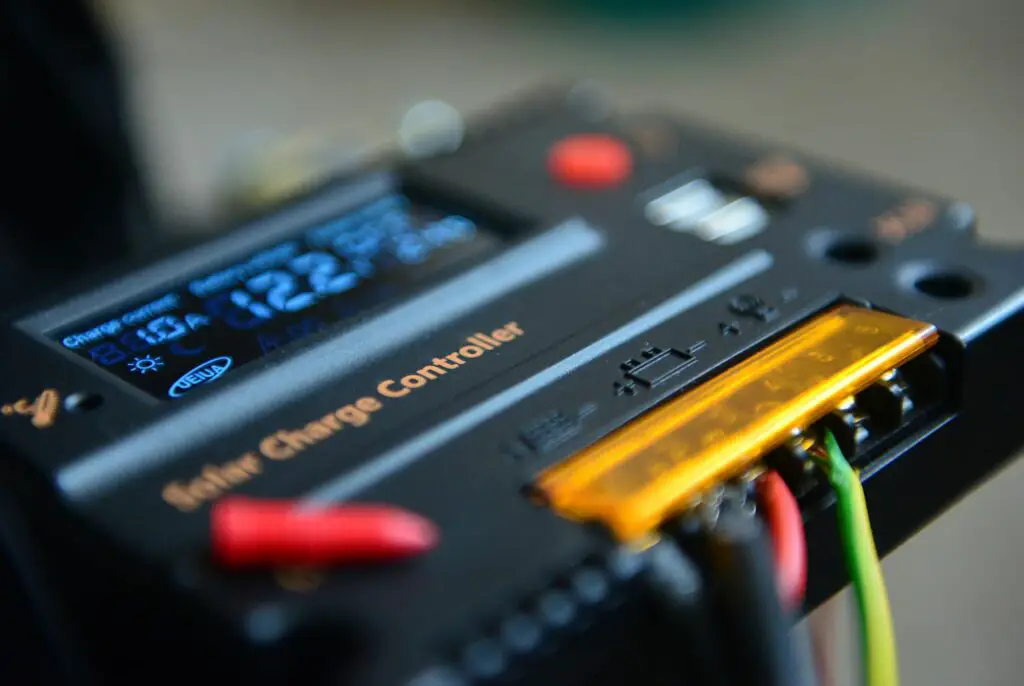What is MPPT (Maximum power point tracking)?
Maximum Power Point Tracking (MPPT) is a method used to get the most energy from sources like solar charge controller, solar panels or wind turbines.
The technique adjusts to different conditions like changes in sunlight, shading, or temperature to keep energy collection efficient.
The main issue MPPT solves is that these factors can affect how well energy moves from the solar panel to other systems, like batteries or the electrical grid.
MPPT keeps tweaking the system to ensure it’s always running at peak efficiency. This peak efficiency is known as the maximum power point (MPP).
Solar panels behave differently under varying temperatures, and this can be understood by looking at two types of curves: the Current-Voltage (I-V) curve and the Power-Voltage (P-V) curve.
MPPT keeps checking these factors and adjusts the system accordingly to make sure it’s always at its most efficient.
Usually, MPPT is part of a larger system that can convert and regulate electricity for different needs, like feeding into the power grid or storing in batteries.
Solar inverters, which change DC power to AC power, often include MPPT features.
How Does MPPT Work?
Maximum Power Point Tracking (MPPT) is all about making your solar energy system more efficient. Let’s say your battery is running low, at 12 volts.
An MPPT takes the incoming 17.6 volts at 7.4 amps from the solar panel and converts it so that your battery gets 10.8 amps at 12 volts.
Now you’re getting close to 130 watts, making the most of your solar power.
In a perfect world, you’d get 100% power conversion. But in reality, the MPPT keeps adjusting the voltage and current to make sure the battery gets as much power as possible. This is important because solar panels work differently depending on the weather and light conditions.
Take a look at the power curve of a typical solar panel. It has a peak point where it’s most efficient.
The MPPT keeps finding this point and adjusts the system to work at that level. When it’s cold, your solar panel can actually produce more power, but without MPPT, you’ll lose that extra boost. The same goes for hot conditions where power output can drop.
When Does MPPT Work Best?
MPPT works best when:
- It’s winter or the weather is cloudy or hazy. You need the extra power most during these times.
- The weather is cold. Solar panels are more efficient in cold weather, and MPPT helps you make the most of that.
- Your battery charge is low. The lower the battery, the more power the MPPT will push into it.
- You have long wire runs. If your solar panels are far from your battery, you could lose a lot of power in the wires unless you’re using an MPPT.
So, an MPPT system keeps your solar setup running efficiently, especially when you need it the most.
What Is an MPPT Solar Charge Controller?
Solar panels often generate more power than your batteries can handle, necessitating control over the energy flow for efficient storage.
This is where a charge controller comes in, regulating the power from the panels to the battery.
Voltage and amperage are key in this process.
Voltage is the force of the electrons, while amperage is the flow rate of these electrons, combining to form power measured in watts.
Maximizing power involves optimizing the volts and amps in the solar system.
An MPPT solar charge controller acts as a DC-to-DC converter, adjusting the voltage from solar panels to suit the battery’s needs.
This ensures minimal energy loss and maximizes storage and usage.
MPPT technology identifies the most efficient output level of solar panels, which varies with factors like time, cloud cover, and panel temperature.
MPPT controllers can be purchased separately for custom solar systems..








